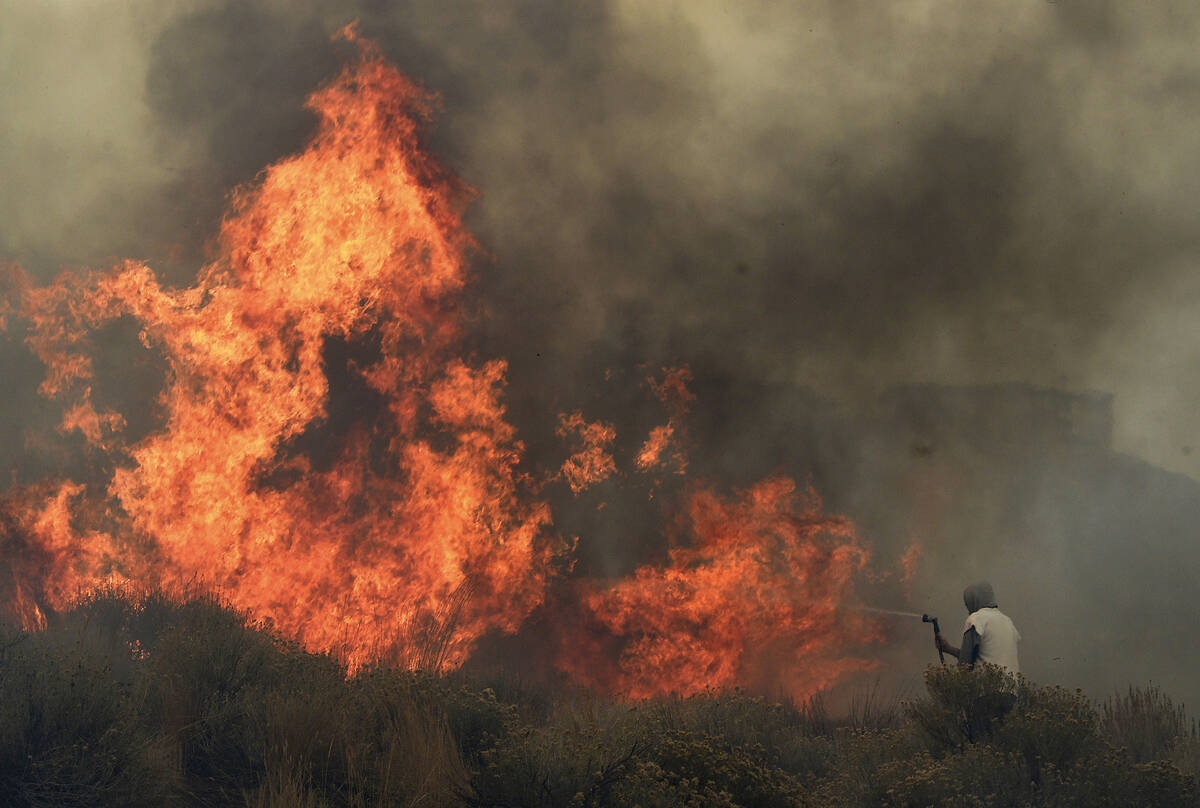Fire danger is peaking in these Nevada regions
Wildfire season is here, and nearly all the public land in western and northeastern Nevada will be under fire restrictions until further notice, the Bureau of Land Management announced Thursday.
The affected areas include all the land managed by the BLM’s Carson City District and Elko District, namely areas within Washoe, Storey, Lyon, Douglas, Churchill, Mineral, Elko, Eureka and Lander counties. Other areas of note include Stillwater, Anaho Island and Fallon National Wildlife Refuges, as well as most if not all state parks in the two regions.
Stage 1 restrictions, as they are called, occur when moisture levels, weather and firefighter availability call for them. While officials don’t dissuade people from recreating in these areas, they are asking for people to exercise caution.
Fire officials warned before the season began that Nevada is in for an overactive fire season. Northern California is already experiencing fires, including one that has grown to roughly 19,000 acres.
In general, studies have shown that climate change is growing Nevada’s total so-called “fire-weather days,” when conditions are favorable for a fire to catch.
Last month, Las Vegas experienced what the BLM called the Bird Springs Fire, which grew to more than 100 acres at its height and was unintentionally caused by target shooting.
One main cause is two wet years in a row. While water supplies benefit in such years, pesky patches of grass have built up across the state that easily fuel wildfires when conditions are dry and windy enough.
“Winter moisture has produced a continuous bed of fine fuels across the landscape, something we have not seen in Western Nevada in a few years,” Jonathan Palma, BLM Carson City District fire management officer, said in a statement. “These fine fuels make it easy to start fires as well as for fires to grow rapidly.”
So what can’t you do?
With the restrictions come guidelines for what you should and shouldn’t do in these areas for the time being. The vast majority of fires are human-caused, BLM spokeswoman Lisa Ross said, so it’s important to follow directions.
People shouldn’t start their own fires — campfire, stove or otherwise — or smoke in most instances. They shouldn’t be welding or grinding metal, and they shouldn’t park their cars or drive them over vegetation, either, according to the BLM.
Rangers will be “aggressively citing” people for not complying with restrictions, according to the federal agency, and fines or prison time are possible depending on the specific statute violated.
As far as fighting a fire when it comes, there’s a lot of interagency collaboration, Ross said. Nevada BLM alone has about 75 staff members who work on fighting fires, she said, and different state and federal agencies or even other states will lend resources should that become necessary.
The BLM’s Elko District encourages people to carry a shovel, fire extinguisher or at least 5 gallons of water in case of emergency.
In the future, Ross said, stage 2 restrictions could go into effect, further preventing people from doing certain fire-causing activities. It’s important to heed the instructions of park rangers and pay attention to your surroundings, she said.
“Be aware of the risk, especially with the extensive fuels out there and the temperatures that we’ve had,” Ross said.
Contact Alan at ahalaly@reviewjournal.com. Follow @AlanHalaly on X.


















